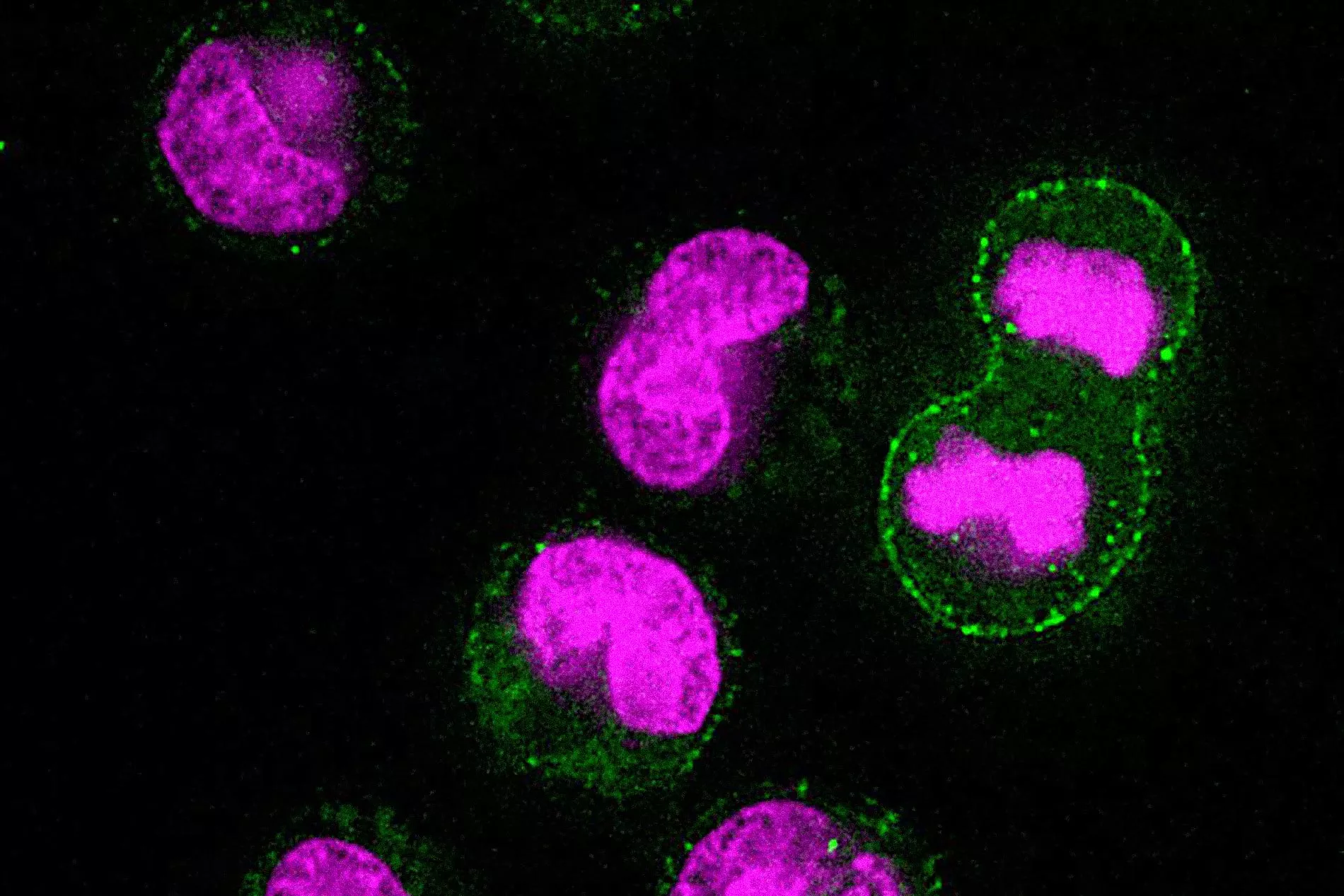Scientists at the Massachusetts Institute of Technology (MIT) have found that before cells begin to divide, they do some cleaning and then throw away molecules that they no longer seem to need Using a new method they developed to measure cell stem mass, the researchers found that cells lose about 4% of their mass as they enter cell division.
The researchers believe that this method of emptying garbage can help cells give their offspring a "clean slate" - Garbage accumulated by no mother cells.
"Our hypothesis is that cells may be throwing away things that are accumulating, toxic ingredients, or just things that you don't want to exist that don't work properly. It allows new cells to have more functional content when they are born," said teemu Miettinen, a MIT research scientist and lead author of the new study
Scott manalis, Professor of Engineering David h. Koch, Department of bioengineering and Department of mechanical engineering and member of Koch Comprehensive Cancer Institute, is the senior author of the research paper, which was published in eLife on May 10. Kevin ly and Alice Lam, undergraduates in the Department of bioengineering at MIT, are also the authors of the paper.
Measurement quality
Measuring the dry mass of a cell -- its contents excluding the weight of water -- is usually done using a microscopic technique called quantitative phase microscopy. Although this technique can measure cell growth, it cannot reveal information about the molecular content of dry mass, and it is difficult to use for cells growing in suspension.
Manalis's laboratory has previously developed a technique to measure the buoyancy mass of cells, that is, their mass when floating in liquids such as water. This method measures the buoyancy mass by allowing the cells to flow through a channel embedded in a vibrating cantilever, which can be repeated to track the change of the mass of a specific cell over many hours or days.

The researchers hope to adjust the technique so that it can be used to calculate the dry mass and density of cells. In fact, about 10 years ago, they found that if they measured cells in ordinary water and then in heavy water (containing deuterium instead of ordinary hydrogen), they could calculate the dry mass of cells. These two measurements can be used to calculate the dry mass of cells.
However, heavy water is toxic to cells, so they can only measure each cell once. Last year, Miettinen began to study whether he could design a system that could repeatedly measure cells and minimize exposure to heavy water.
In the system it came up with, when cells flow through microfluidic channels, they are very briefly exposed to heavy water. The researchers can measure the mass of the dry cells in the water in just one second and then compare it with the normal mass of the water.
"Our idea is that if we try to minimize the contact of cells with heavy water, we can design this system so that we can repeat this measurement over a long period of time without damaging the cells. This enables us to track not only the dry mass of cells - which others have done using microscopy, but also the density of dry mass, which enables us to understand the biomolecular composition of cells," Miettinen said
The researchers said their dry mass measurements were qualitatively consistent with previous work using quantitative phase microscopy. And in addition to providing the density of dry matter, the MIT team's method can achieve higher time resolution, which has proved very useful in revealing the dynamics during mitosis (cell division).
Throw away the garbage
In cells undergoing mitosis, researchers use their new technology to study what happens to cell quality and composition in the process. In a 2019 paper, Miettinen and manalis found that the buoyancy mass increased slightly with the beginning of mitosis. However, other studies using quantitative phase microscopy have shown that cells may retain or lose dry quality early in cell division.
In the new study, the MIT team measured three types of cancer cells. Because these cells divide more frequently than healthy cells, they are easier to study. To the researchers' surprise, they found that when cells entered the cell division cycle, their dry mass actually decreased. This quality was later restored before the division was complete.
Further experiments showed that when cells entered mitosis, they increased the activity of a process called lysosomal extravasation. Lysosomes are organelles that break down or recycle cellular waste, and exocytosis is the process they use to discard any molecules they no longer need.
The researchers also found that as cells lose dry matter, the density of dry matter also increases, leading them to believe that cells are losing low-density molecules such as lipids or lipoproteins. They hypothesized that cells use this process to remove toxic molecules before dividing.
The researchers speculate that their findings may help explain why neurons that do not divide are more likely to accumulate toxic proteins such as tau or amyloid β, These are related to the development of Alzheimer's disease.
In addition, the findings may also be related to cancer. Cancer cells can use cell extravasation to excrete some chemotherapeutic drugs, so as to help them develop resistance to drugs. Theoretically, preventing the occurrence of exosomes before cell division can help make cancer cells more vulnerable to such drugs.
"In some diseases, we may want to increase extracellular secretion, such as neurodegenerative diseases, but there are also diseases like cancer, we may want to lower it. In the future, if we can better understand the molecular mechanism behind this and find a way to trigger it outside mitosis or prevent it during mitosis, then we can really use a new switch in the treatment of diseases." Miettinen said.